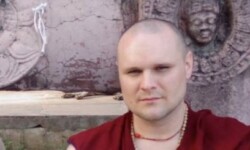Demographic Age Challenges in Buddhism (With Special Attention to Lack of Peer Groups as a Challenge for Westerners Ordained from a Young Age)
The lack of age diversity in Western Buddhism plays out in many ways and has many unforeseen consequences.
One of the things that I’ve enjoyed about attending grad school is the opportunity to meet people closer to my own age. While the majority of the actual grad students are younger than I am, the adjunct, post-doc and staff tend to be in their mid thirties to forties.
It has been great to have a chance to connect with people in my peer group. As people who ordain young (for Westerners), before thirty, the period of your mid-thirties to forties is an awkward one. As friends marry or partner off, take out mortgages, and build careers sometimes it feels like we are, as a friend once stated, “in an extended adolescence”.
Before pandemic and study times, I cherished my trips to Sera for the same reason – the chance to connect with friends around my age, who, despite some cultural differences, shared a common lifestyle and life experiences.
Some of the kindest, most intelligent, and inspiring people I’ve met have been in dharma centres. But by far the majority are between 15-30 years older than me. This means a lack of shared cultural references, life experience and outlook. I am fortunate that I work with Geshe Sonam who is only 10 years older than I, but many younger friends I know live and work in communities where there is no one who isn’t at least 20 years older than they are.
Lately, I’ve heard lamenting about the lack of Westerners deciding to ordain as monks and nuns. But really, this is not the first issue to address. The first issue we need to look at is how to diversify the age groups in dharma centres. How do we engage with and attract younger communities? Younger communities are also more diverse, so how can we reach out to racialized groups in a way that removes barriers to their participation?
While this may seem like a niche issue, it is one that, if not addressed, means the foundations of Buddhism in Western countries will become even more unsteady and precarious. I’ve spoken to some older people who aren’t worried “If people have the karma, they’ll join.” But isn’t it our karmic duty, to try to make our spaces welcoming so they feel comfortable joining?
Continuing on as if these problems don’t exist demonstrates a lack of commitment to establishing and nourishing the teachings for future generations.
This issue snowballs. So as demographics age, there are fewer and fewer younger people in centres. Fewer younger people mean fewer younger Sangha. Fewer younger people mean fewer young and energetic volunteers. And long-term, fewer benefactors able to give enough to keep centres sustainable.

